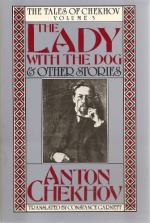|
This section contains 7,911 words (approx. 27 pages at 300 words per page) |

|
SOURCE: Rayfield, Donald. “Love.” In Understanding Chekhov, pp. 198–212. Madison: University of Wisconsin Press, 1999.
In the following essay, Rayfield ponders Chekhov's late 1890s stories depicting love.
“The House with the Mezzanine” and the stories of love, requited or not, consummated or not, of 1898–9 reveal a radical change in Chekhov's attitude to woman and sexuality. Even the aggressive activist—Lida Volchaninova or Masha Dolzhikova, even the vicious Aksinia Tsybukina—who condemns the narrator to solitude, or the family to ruin, no longer personifies a Schopenhauerian female force; and she is balanced by the persistent, if passive and vulnerable personification of female dependency—Misius, Aniuta Blagovo, or Lipa. Now, after the crisis of 1897, instinct takes precedence over reflection, desire over morality, and to Chekhov's heroes the unhappiness that arises from indifference, rationalisation or cold, calculating self-interest makes the consequences of sensuality or impulsiveness seem by comparison good, natural and salutary. His...
|
This section contains 7,911 words (approx. 27 pages at 300 words per page) |

|


